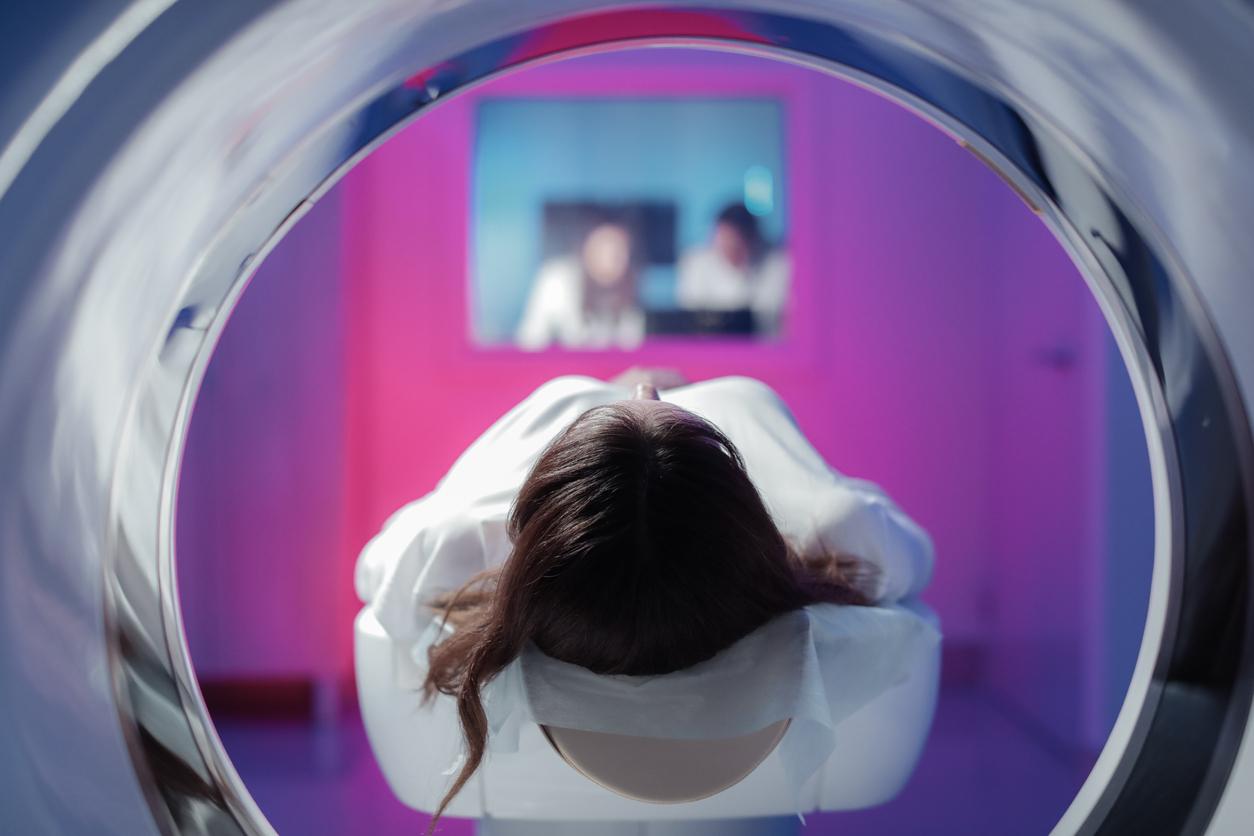
Blood (cell) cancer or bone marrow cancer
Leukemia is a collective name for various forms of cancer in which too many immature, white blood cells are formed. The production of normal blood cells is then compromised, causing all kinds of complaints.
John Hughes was the first to diagnose leukemia in 1845. When scientists in the 19th century discovered an excess of white blood cells in their bodies in several patients, they called this ‘weisses blut’, or ‘white blood’. The name leukemia comes from the Greek word ‘leukos’, which means ‘white’. The medical name for white blood cells is leukocytes.
What is Leukemia?
Leukemia occurs when abnormal white blood cells proliferate in the bone marrow. Bone marrow is the cradle of all our blood cells. This spongy tissue is located in the interior of the bones and consists, among other things, of pluripotent stem cells. These stem cells can develop into any type of blood cell: red and white blood cells and platelets.
In leukemia, there is an overproduction of immature white blood cells. These do not grow into mature blood cells, but derail and accumulate in the bone marrow. This compromises the production of normal blood cells and leads to a shortage of normal blood cells.
This has all kinds of consequences. For example, a shortage of red blood cells causes anemia. A lack of normal white blood cells makes you more susceptible to infections. If you have too few platelets, it can lead to bleeding.
In the early stage of leukemia, the immature white blood cells are only in the bone marrow. Over time, they spread through the bloodstream to other organs, including the lymph nodes, spleen, and liver. That leads to other problems.
Different shapes
There are different types of leukemia. There is an acute and a chronic form. Both are further subdivided into lymphoid and myeloid leukemias. There are four main groups:
- Acute Lymphocytic Leukemia (ALL)
- Chronic Lymphocytic Leukemia (CLL)
- Acute Myeloid Leukemia (AML)
- Chronic Myeloid Leukemia (CML)
Acute or chronic
The extent to which abnormal leukocytes (white blood cells) mature determines the difference between acute and chronic leukemia. In acute leukemia none of them mature. As a result, there is often an excess of these immature cells in a short time and complaints can occur within a few weeks due to a shortage of healthy blood cells. Without treatment, acute leukemia can be fatal within a few months.
In chronic leukemia, the white blood cells partially mature. As a result, they still function quite well. Since the malignant leukocytes live longer than the normal leukocytes, they will eventually displace them. This process is much slower than in acute leukemia. Complaints can therefore be avoided for years. It often happens that this condition is discovered by accident. As a rule, however, chronic leukemia is more difficult to cure than an acute form.
Lymphatic or myeloid leukemia
The difference between lymphoid and myeloid leukemia depends on the type of bone marrow stem cell that derails. The precursor of every blood cell is a pluripotent stem cell. From this, two types of immature blood cells can develop:
- Lymphoid stem cells. A lymphoid stem cell grows via a lymphoblast into a lymphocyte, a specific type of white blood cell.
- Myeloid stem cells. Myeloid stem cells grow through myeloblasts into red blood cells, platelets or two types of white blood cells: granulocytes and monocytes.
Lymphoid leukemias start somewhere in the maturation pathway between lymphoid stem cells and (the different types of) lymphocytes that arise from them. Lymph node cancer is a form of lymphoid leukemia. In myeloid leukemias, this occurs somewhere in the myeloid pathway.
How common is leukemia?
In the Netherlands, more than 2000 people are diagnosed with leukemia every year. ALL affects about 225 people. These are mainly children aged 0-14. It is the most common form of childhood cancer. CLL involves about 1000 people, mainly the elderly. CLL is more common in men than in women. Around 700 people between the ages of 20-40 and older people over 60 are diagnosed with AML. CML is diagnosed approximately 165 times. In 70 percent of the cases, the patients are older than 50 years.
Cause
Like any cancer, leukemia is caused by a change in the DNA (genetic material) of a cell, in this case a bone marrow stem cell. This disrupts cell division and newly formed cells lose their original function. Why this happens in bone marrow stem cells is often unknown.
The culprit in CML is known: that is the Philadelphia chromosome (Ph). This mutated chromosome produces a specific protein that causes CML. Ph is also found in 20 percent of all ALL patients. It is a chromosome abnormality that arises during life and that you do not pass on to your children.
Environmental factors that may cause leukemia include radioactive radiation and some chemicals, such as benzene, ethylene oxide, and diesel exhaust. People who work in certain professions have an increased risk of this disease. Think, for example, of miners, farmers, hairdressers and employees in the petrochemical and chemical laundries. In addition, there is a small percentage (about 3 percent) of patients who develop leukemia years after cancer treatment with radiotherapy and chemotherapy.
Finally, there are indications that genetic predisposition makes people more susceptible to leukemia. The disease is more common in some families. People with congenital defects, such as Down syndrome, are also more likely to develop leukemia.
Symptoms of Leukemia
Although leukemia can cause a range of complaints, there are a number of symptoms that often occur:
- Severe, unexplained fatigue.
- Losing weight for no apparent reason.
- Swollen lymph nodes, for example in the neck, armpits or groin.
- Recurring infections.
- Bleeding and unexplained bruising.
- Severe anemia.
- Increased heart rate.
- Swollen or painful abdomen (due to an enlarged spleen).
- Joint pain and aching bones.
- Night sweats and/or fever.
How is leukemia diagnosed?
Do you have symptoms that may indicate leukemia? Go to your doctor for further investigation. If he or she shares your suspicion, a blood test will be done. This includes looking at the number and shape of the different types of blood cells. This may be followed by a bone marrow biopsy, in which a small pipe of bone (often from the pelvis) containing bone marrow is removed with a thin needle.
Possible additional investigations are:
- A CT scan.
- A PET scan.
- Skeleton photos.
These examinations can determine where in the body the accumulated immature leukocytes are located.
Therapy
How leukemia is treated and what the outlook is depends on the patient’s age, the type of leukemia and the stage of the disease. Chemotherapy and radiation are often chosen. In addition, immunotherapy can be used to reduce the disease. With this form of treatment, drugs ensure that the own immune system can destroy the cancer cells better. You can also get a stem cell transplant. In this case, healthy stem cells from yourself or a donor are administered via an IV. This is a very severe treatment. In addition, medications such as styptic agents (haemostatics) and painkillers may be prescribed. When the patient’s defenses are very low, antibiotics can help fight serious bacterial infections.
Prognosis
In acute leukemia, in general, the chance of a cure is greater in younger people than in older people.
About 85 percent of children recover from ALL. In adults, the percentage is about 40 percent. With treatment, the average five-year survival in ALL is 28 percent, for children the average five-year survival is above 70 percent.
With AML, the outlook for many patients is much less good. With treatment, the average five-year survival rate in AML is 20 percent. Children have much better prospects: in AML it is around 60 percent.
CLL progresses slowly in many patients. In 60 percent of cases, the disease remains calm for the first 5-10 years, so they do not necessarily need to be treated. Eventually, however, there will come a time when the disease becomes more aggressive and treatment must be started. Unfortunately, a complete cure has not yet been achieved in CLL. The median five-year survival rate for patients with CLL is 80 percent.
In CML, too, the clinical picture is calm during the first few years (the chronic phase). If the disease is detected at this stage, it can be well controlled with medication in the majority of patients. If CML is diagnosed at a later stage, the chances of survival drop from a few years to a few months. CML can only be cured with a stem cell transplant (sometimes). The average five-year survival rate for patients with CML is 70 percent.
Sources):















